2021 AIGA Medalist: Archie Boston, Jr.
“Expanding Voice”
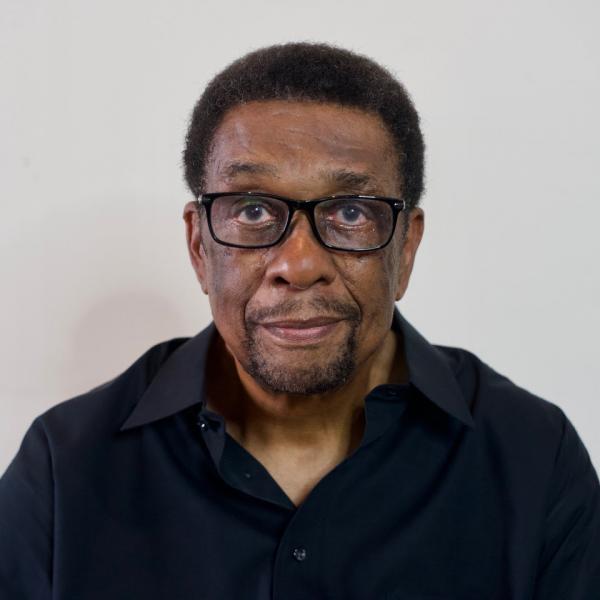
Recognition
2021 AIGA Medal
Born
1943, Clewiston, Florida
By Silas Munro
September 13, 2021
Recognized for his longstanding commitment to his students as an educator and mentor, and for his profound influence on the community of Los Angeles, as well as his bold, funny, polemical designs from a lifetime body of work.
When Archie Boston Jr., the nationally recognized art director, designer, educator, and author, talks about graphic design, he also talks about God, ethics, activism, race, and legacy—though he doesn’t use that last word when speaking about his career. Boston’s legacy isn’t one that lives in the future, though it will; it’s one that thrives today in the expanding voices of his former students, his iconoclastic commercial success, and his socially focused personal work—all of which sprung from an arts-filled childhood in a racially charged 1940s St. Petersburg, Florida.
The son of a sugar cane sharecropper, Boston was born in 1943 in Florida. A precocious child, he excelled at school, in math in particular, and was encouraged to draw and decorate the bulletin boards of his classrooms. Baptized at 12-years-old, Boston credits his religious background with giving him the foundation he needed to, as he puts it, “do what I wanted to do.” He elaborates, “I wanted to make a statement. I didn’t feel as though I needed an endorsement from anybody.”
Boston lived through the integration of Florida public schools, but settled into an all-Black high school and was inducted into the National Honor Society in the eleventh grade. That year he also participated in a civil rights sit-in to integrate a local restaurant. His high school art teacher, Mrs. Mary Jones, encouraged his artistic skill enough for Boston to enter the Pinellas County Fair art exhibition, where he won an honorable mention for one of his paintings.
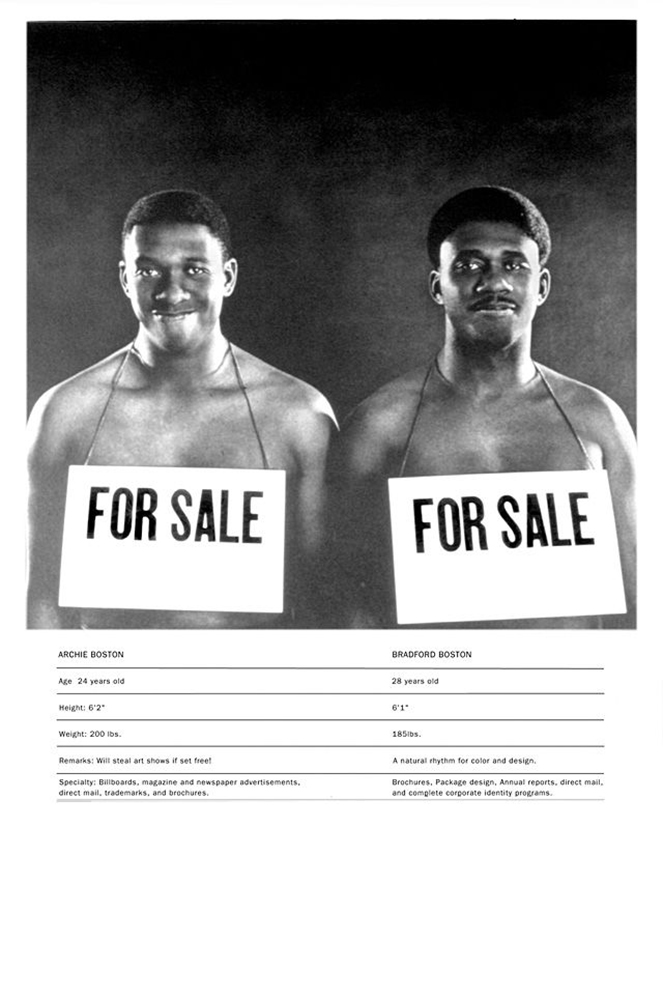
“For Sale,” Boston & Boston self-promotional poster, 1967. Creative Director: Brad Boston; Art Director: Archie Boston; Designers: Brad Boston, Archie Boston; Photographer: Jerry Trafficanda.
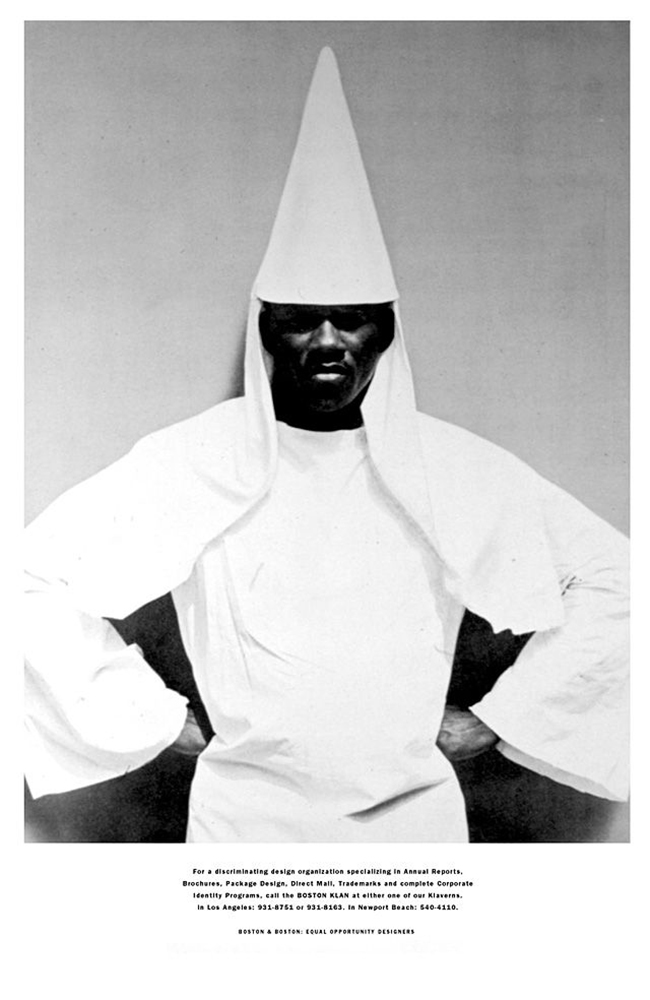
“For a Discriminating Design...” Boston & Boston self-promotional poster, 1966. Creative Director: Brad Boston; Art Director: Archie Boston; Designers: Brad Boston, Archie Boston; Photographer: Jerry Trafficanda.
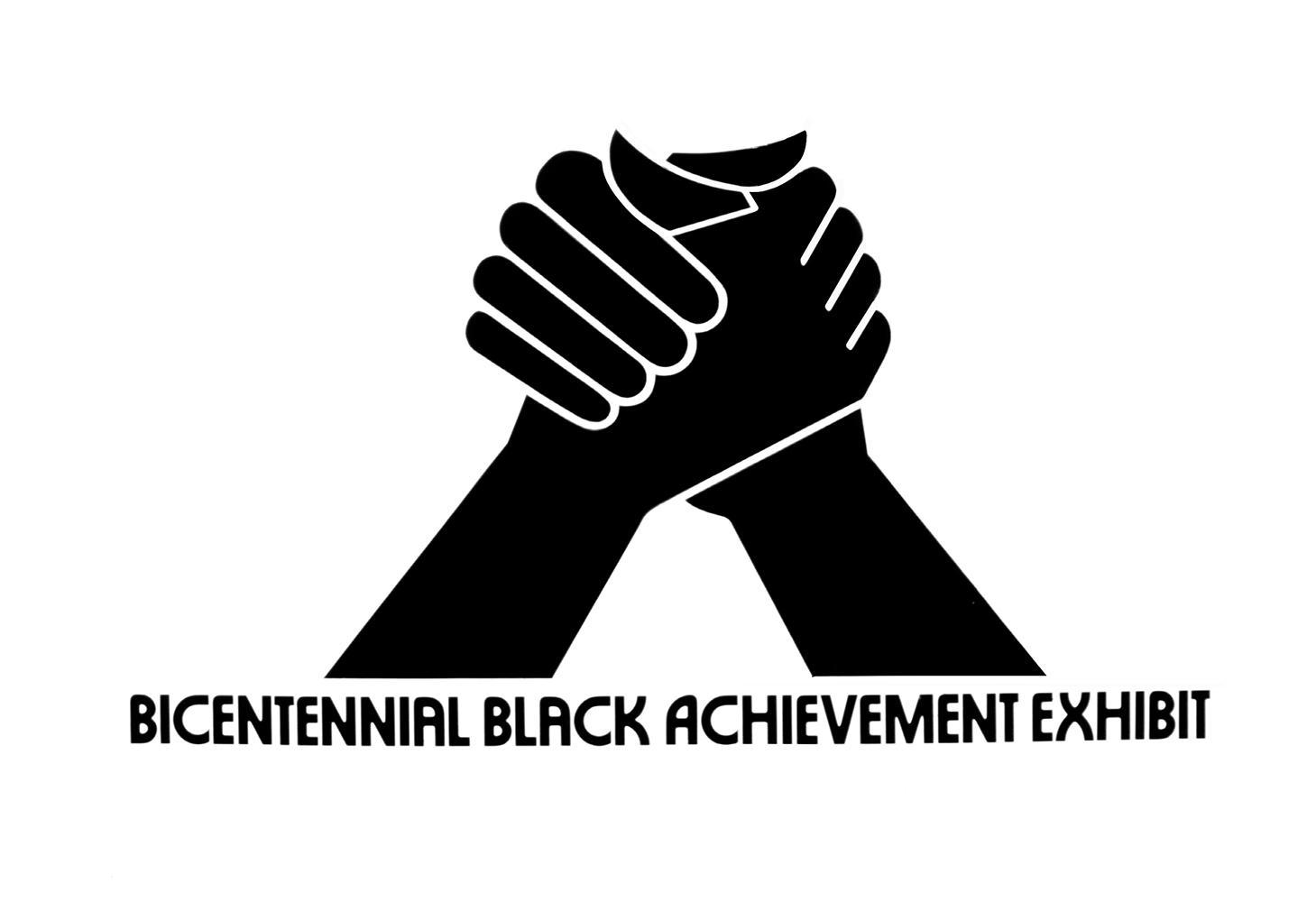
Bicentennial Black Achievement Exhibit logo, 1976.

Dr. Princeton Perry logo, 1967. Client: Dr. Princeton Perry; Creative Director: Brad Boston; Art Director: Archie Boston; Designers: Brad Boston, Archie Boston; Illustrator: Brad Boston; Writer: Archie Boston.
Press Release
Archie Boston, Jr. will be honored with the AIGA Medal during the AIGA Awards Celebration at the AIGA Design Conference on Tuesday, September 21, 2021 at 5:30 p.m. Eastern. Come celebrate with us!
Motivated to pursue a career in art, Boston followed in his brother Brad’s footsteps and moved to Los Angeles in the early 1960s to enroll at the Chouinard Art Institute (now CalArts) and study graphic design. Lou Danziger, Ken Parkhurst, and Marvin Rubin were a few of his instructors, but his brother proved to be his greatest influence. “[He] and I were sort of brash, young African Americans in this white world, and we just wanted to shake them up.” Boston graduated with honors and took a position as an art director at Hixson and Jorgensen Advertising, before leaving two years later to form Boston & Boston with his brother.
In 1967, the Boston brothers launched Boston & Boston, one of the first Black-owned creative agencies in the country. Using provocative and memorable images referencing slavery and race in the promotions for their agency, they quickly made a name for themselves and their bold and daring aesthetic, while critiquing racism in the design and advertising industry . “We just wanted to stand out and say, ‘Okay, here's some African American designers who want to work with you. If you don't like us, then get out of the way,” Boston says. “There's somebody out there who wants to work with us. If you’re offended by my poster, then you're not the client that we want. We want a client that is progressive, a client that is open, and a client that is adventurous.” The team went on to create groundbreaking work for clients including Beckman Instruments, Chiat/Day advertising, and Concord Electronics.
After he married, Boston took a position at the ad agency Botsford-Ketchum for eight years, while simultaneously starting his own firm, Archie Boston Graphic Design. While at Botsford-Ketchum, he applied his trademark snark and wit in campaigns for Motorola, Raytheon, and Yamaha. One of his famous headlines for the art supplier Pentel reads: “I told Pentel what to do with their pens. And they did it.” His role at Botsford-Ketchum expanded his knowledge base for his next step into academia, rounding out his graphic design practice with copywriting and extensive art direction experience. “If I had stayed in just as a graphic designer, I don’t think I would have grown as fast,” adds Boston. “And then adding academia… gave me a whole new dimension.”
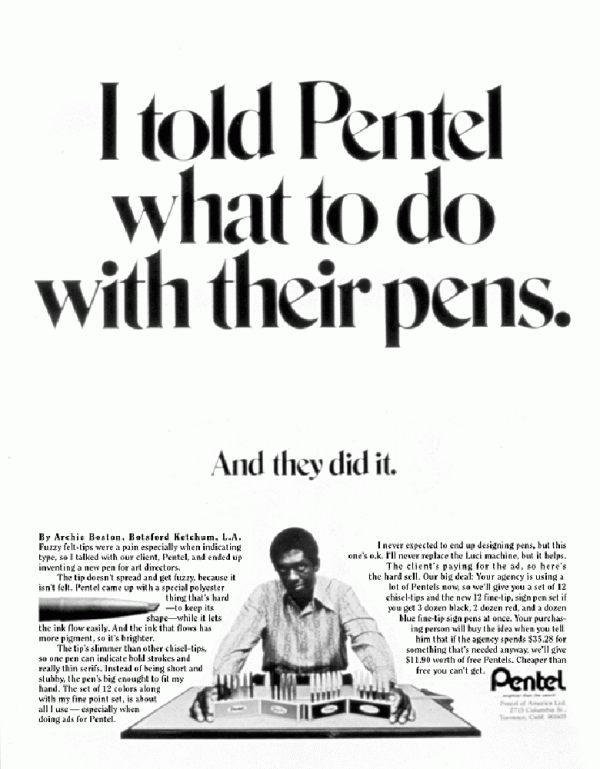
“I told Pentel what to do…” 1971. Ad: Archie Boston; Writer: Ken Brnsoh; Photographer: Roger Marshutz.
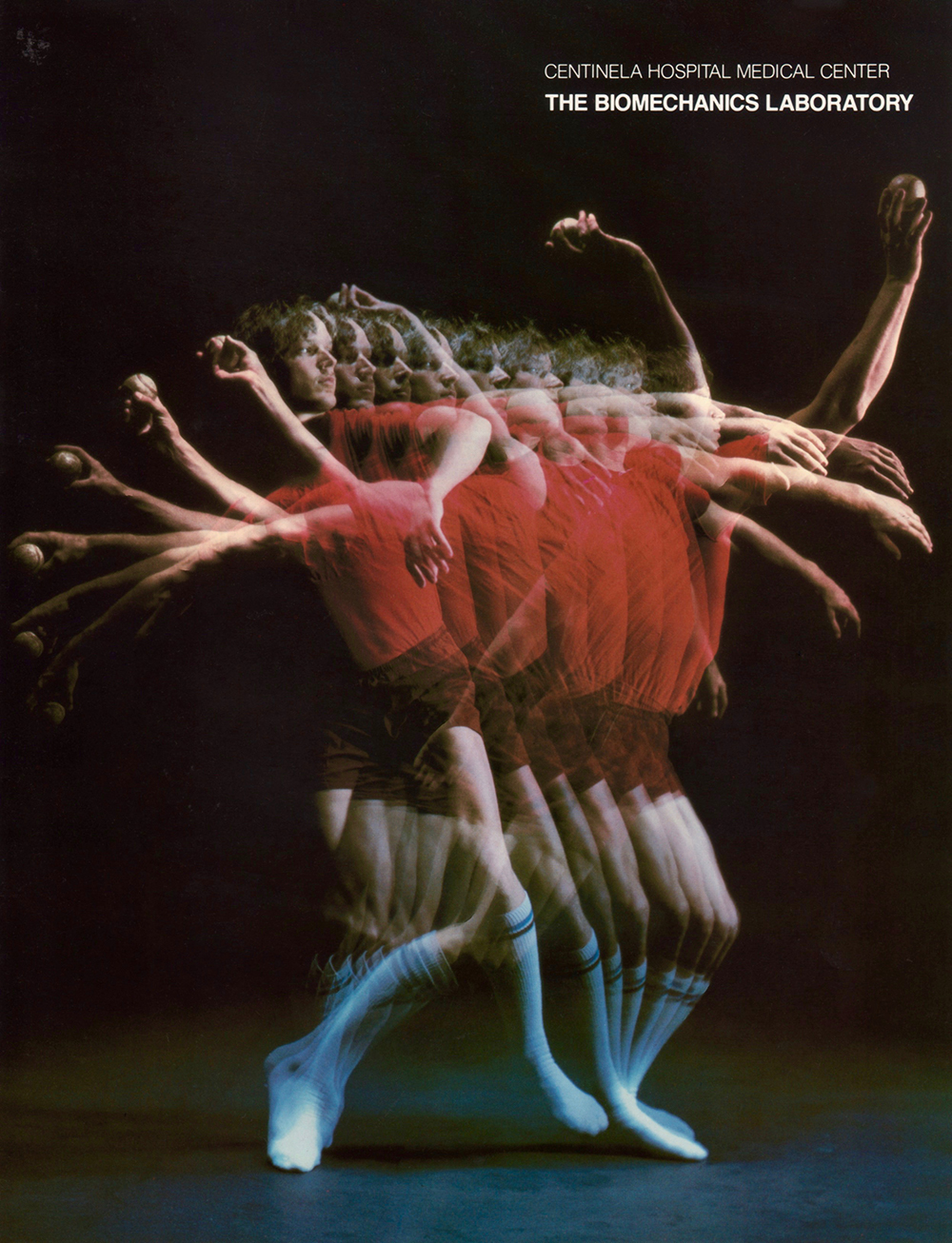
Centinela Hospital Medical Center, The Biomechanics Laboratory, brochure cover, 1984.
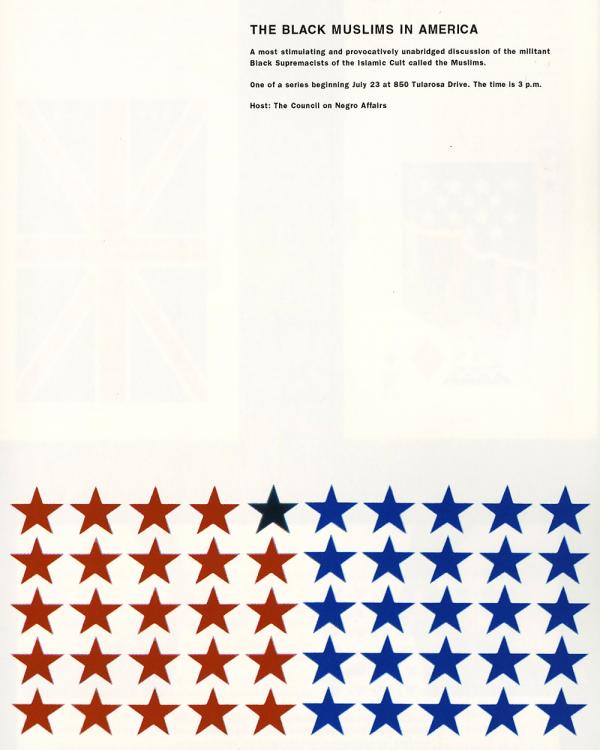
Bradford and Archie Boston, The Black Muslims in America poster for The Council on Negro Affairs, 1963.
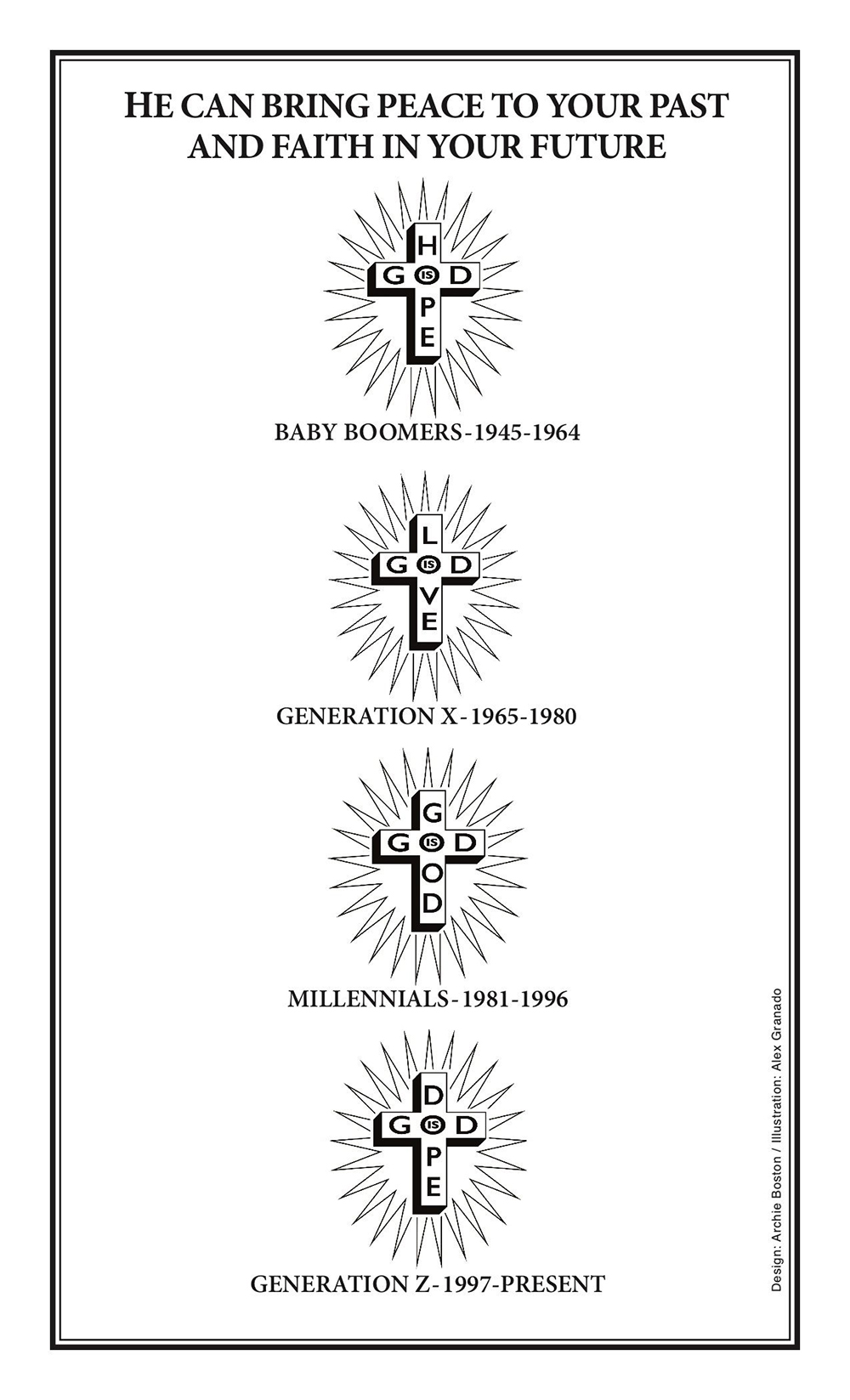
New Year’s Poster, 2021.
Boston’s long tenure as a professor and eventual chair of California State, Long Beach’s Visual Communications program began in the late 1970s after he received his Masters at the University of Southern California. During his time in academia, Boston became a leading and award-winning design educator. He mentored generations of designers and design educators and was an early proponent of ensuring that BIPOC designers are recognized, hired, and promoted in academia and professional spaces.
Boston’s efforts in academia went beyond making sure diverse talent was recognized—he worked to ensure young Black designers were hired, promoted, and given space in the industry. In doing so, Boston created a home and community that inspired, welcomed, catalyzed, and challenged the next generation of designers (and the people who hired them) to embody a bold vision for a faculty that reflected the makeup of the student body. “When I had students work for me or anyone else, I made sure they were paid,” says Boston. “I’d say, ‘If you’re unemployed and can’t buy books, come work for me, and then when you find another job, you’ll move on because there’s somebody else who is unemployed who can take your place.’”
During his first sabbatical, Boston interviewed and filmed leading Los Angeles designers including Saul Bass, Marian Sampler, and Robert Miles Runyan. Every one of those designers should have a Lifetime Achievement Award, according to him. The proceeds from the resulting documentary, 20 Outstanding Los Angeles Designers, funded a scholarship for design students in need.
In 2001, Boston self-published his memoir with seed funding from his white mentor and friend, the advertising copywriter Dale Zaret. Fly in the Buttermilk, a celebration and exploration of Boston’s life and career, has become a touchstone for subsequent generations of BIPOC graphic designers, many of whom view Boston as an inspiring example of how to succeed in an industry that has historically marginalized BIPOC designers. “As a 66-year-young African American male, I have three design fathers: Saul Bass, Paul Rand, and Lou Danziger, whom I hold to the highest esteem,” says Frank Briggs, Boston’s friend, and colleague. “I can emphatically state [that] Archie Boston, as a designer, is more original than any of them.”
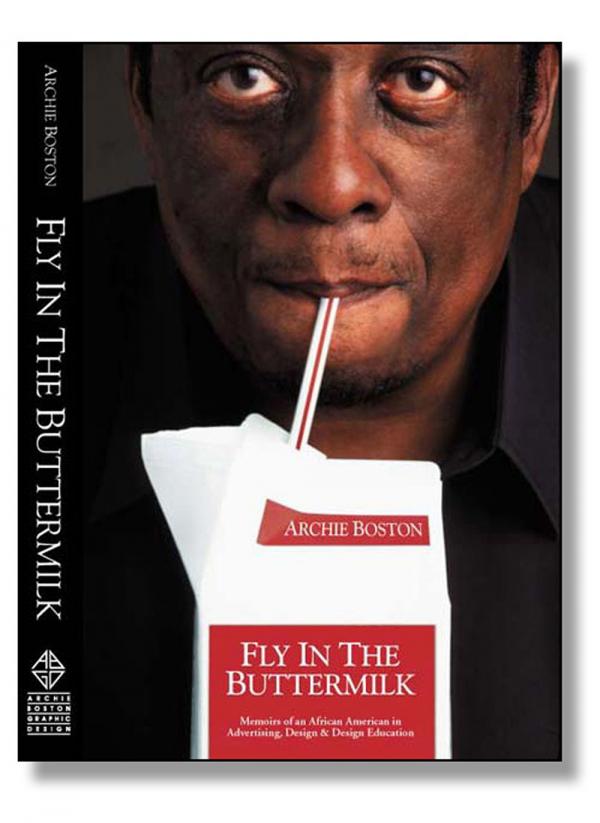
Fly In The Buttermilk, a memoir by Archie Boston, 2001. Jacket Designer: Archie Boston; Photographer: Todd Gray; Production Artist: Thai Dao, David Mesfin; Editor: John Farrell.
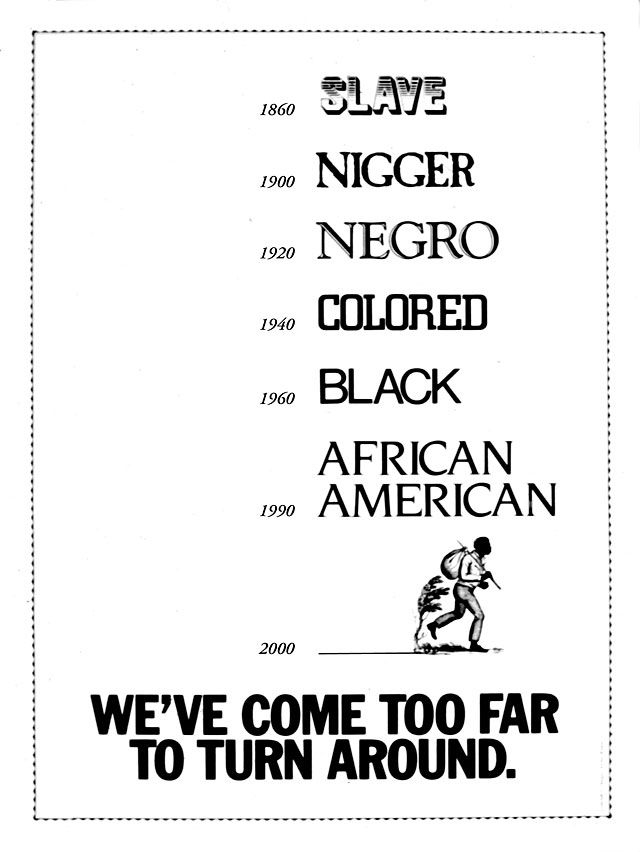
“We’ve Come Too Far To Turn Around” 1991. Ad, Designer, Writer: Archie Boston.
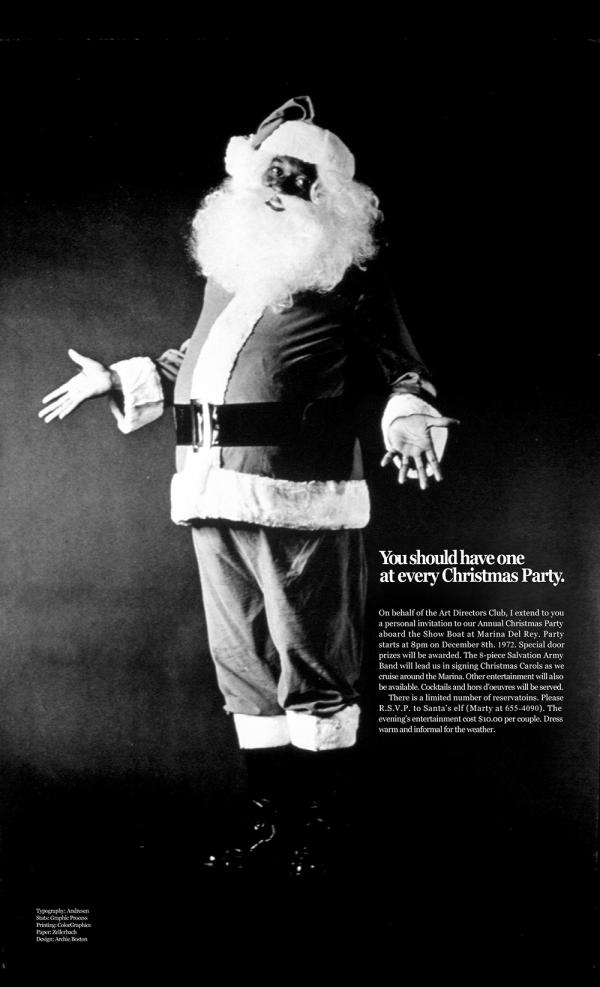
“You should have one at every Christmas Party,” Art Directors Club poster, 1972.
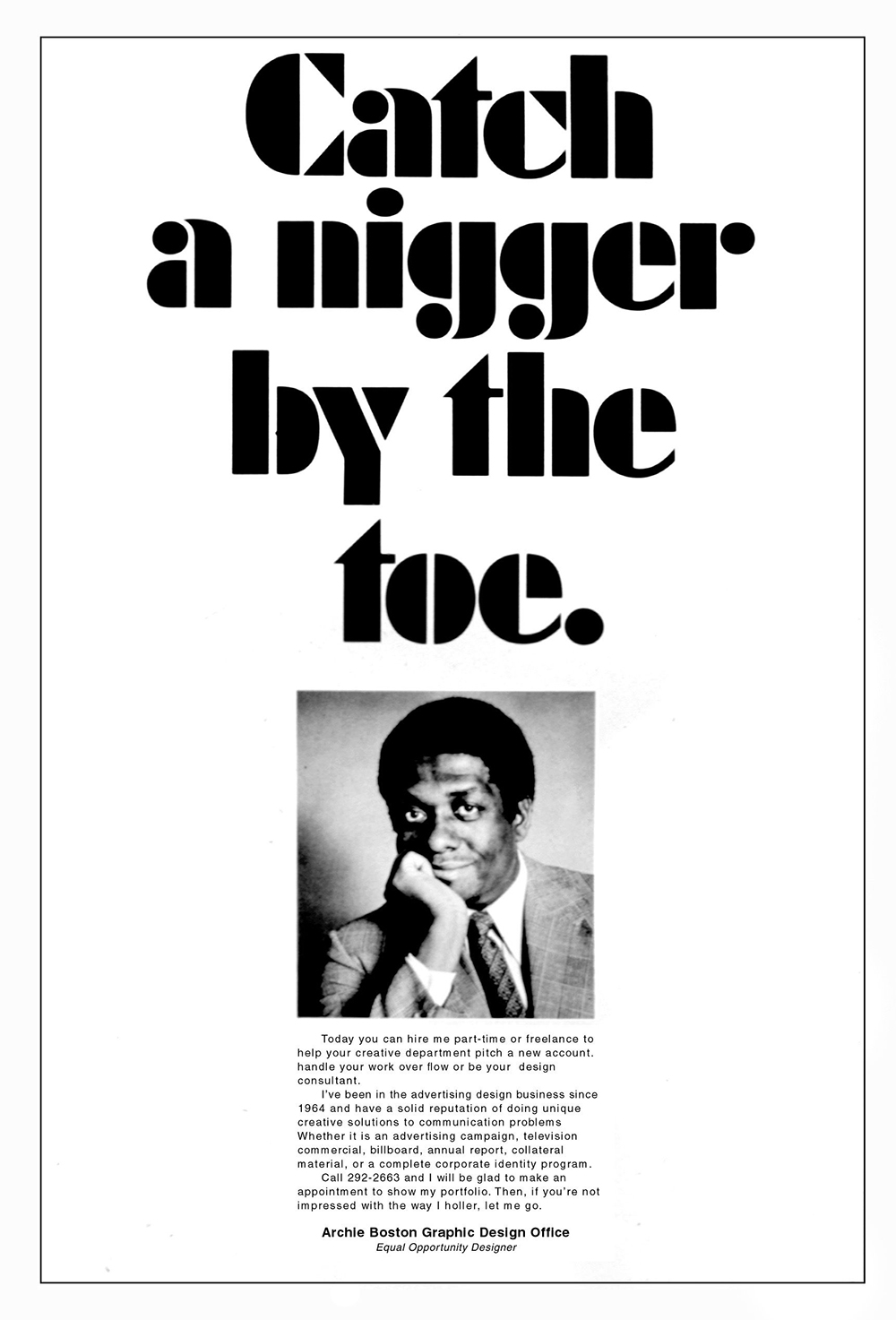
“Catch a nigger by the toe.” Self-promotional poster, c. 1986. Designer: Archie Boston Design.
Boston’s career is studded by accolades including becoming the first African American man to serve as president of the Art Directors Club of Los Angeles. In 2004, CSULB named him Outstanding Professor of the Year. “I never dreamed that they would make me, a Black guy, an outstanding professor after all of my work. [Things like] ‘Tis the Season to be Jolly and Gay Like Me, Santa Claus,’” Boston says. “I was kind of poking fun at everything and everybody.”
Boston and his work were featured in the multi-part series The Real Mad Men of Advertising, and Graphic Design: USA named him as one of 35 design pioneers. He has won awards for his work in distinguished Directors Club Shows including New York, San Francisco, and Los Angeles, and was the first African American recipient of the prestigious AIGA Fellows Award from the L.A. Chapter of AIGA in 2007. In 2018, Duke University acquired Boston’s entire body of work dating from 1963—an honor that speaks to Boston’s influence on the profession. “I sort of flourished during a time where I could do a lot of things that were not socially acceptable,” Boston says. “We didn’t have the internet or social media [where people could] lash out . . . individually and collectively.”
In 2009, Boston retired from academia, but he hasn’t stopped creating or influencing future generations. He created a series of posters for Black Lives Matter, and in 2018 worked with his brother David to produce a documentary called Black Pioneers of the Sunshine City that chronicles the pioneering work of Black community members in St. Petersburg, Florida.
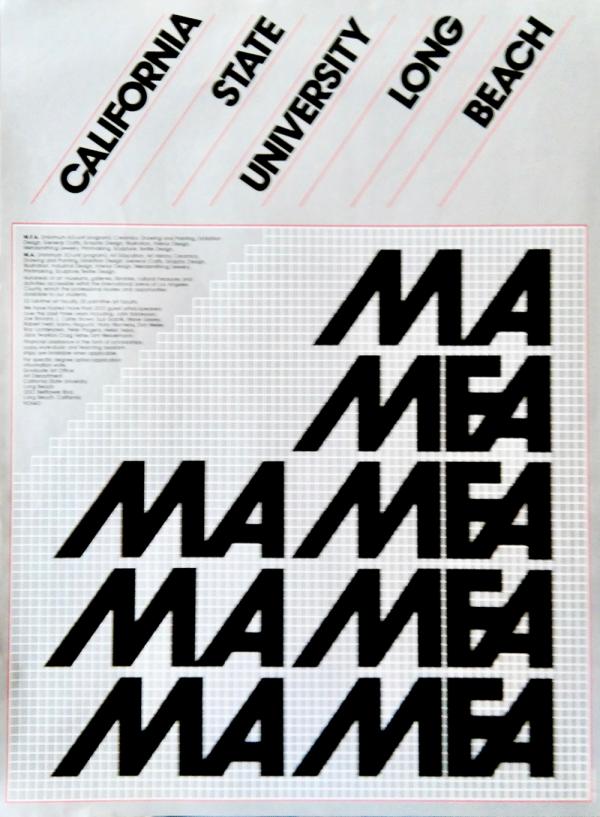
California State University, Long Beach MFA poster, 1978.
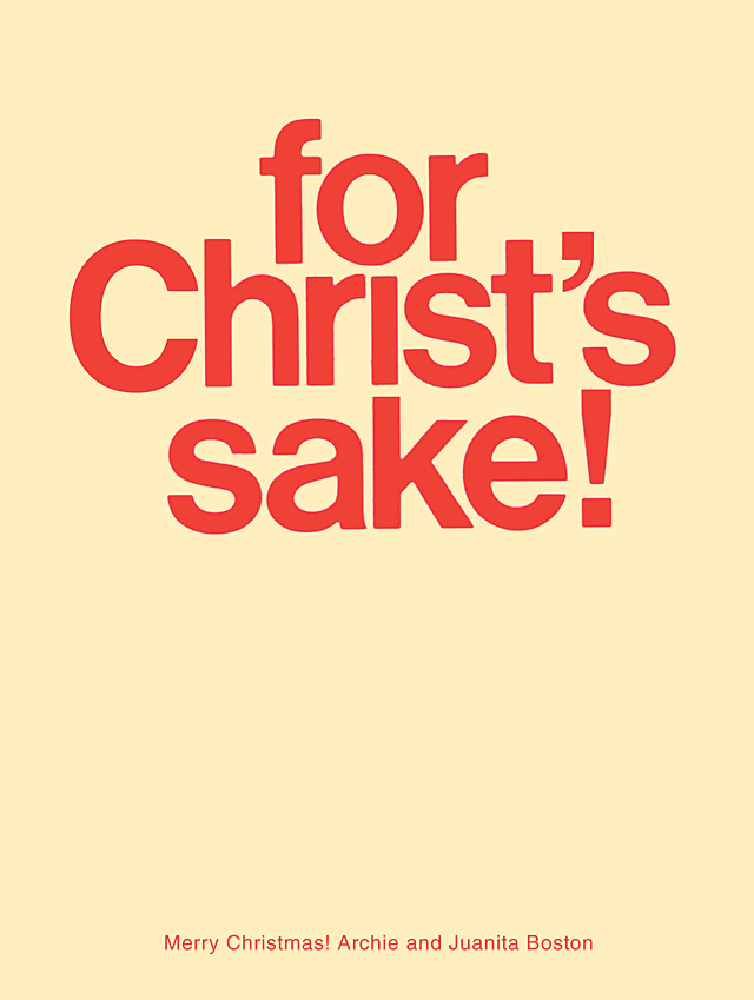
“For Christ’s Sake,” 11” x 14” poster, 1973. Designer: Archie Boston; Production Artist: Ruby Katayama.
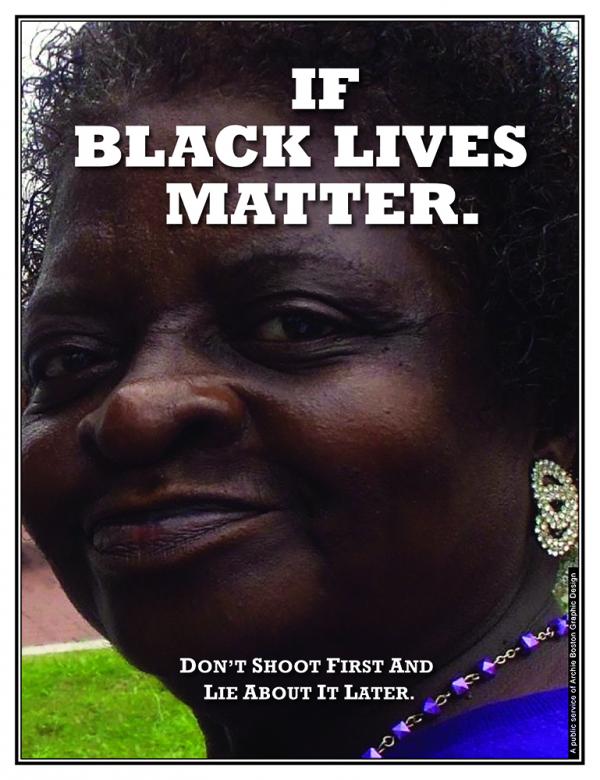
Black Lives Matter poster, 2020. Design: Archie Boston.
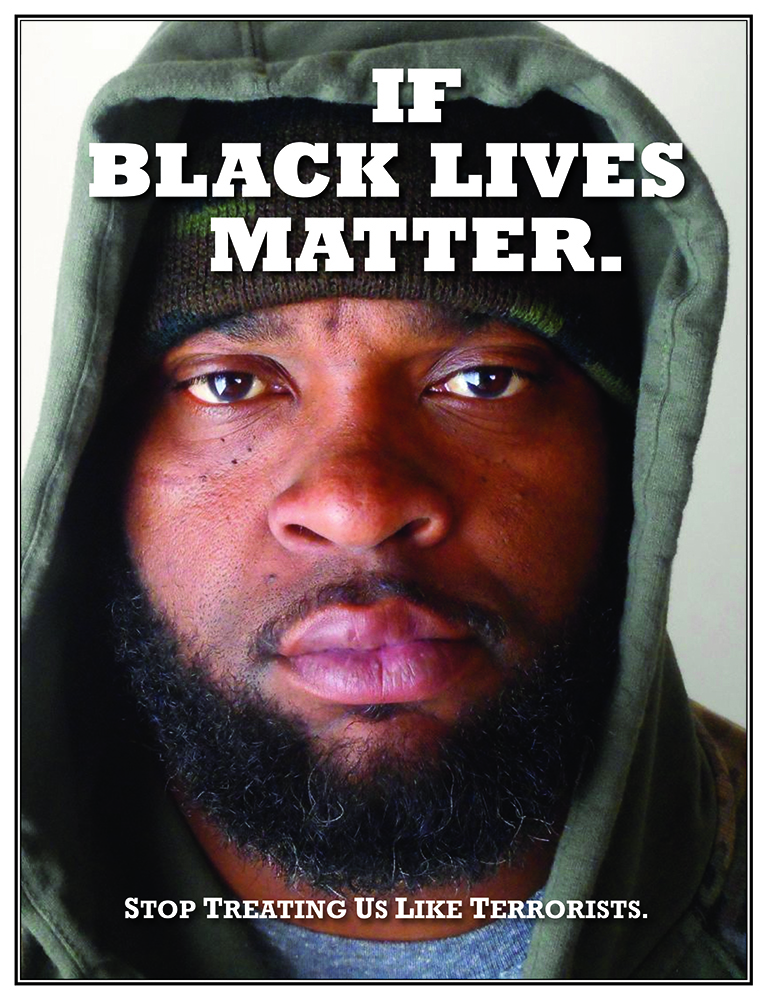
Black Lives Matter poster, 2020. Design: Archie Boston.
In recent years, Boston has focused on imbuing his design work with his spirituality. For him, spirituality means incorporating intuition and emotion in the design process. “Use your intuition, trust in yourself, and then try to reflect on ‘How do I solve this problem?” rather than, ‘Well, I'm going to do it to make money,’” he says. “Your best work may not be winning awards or selling a brand that can increase your client’s share of a target market. It could mean designing responsibility by taking into consideration the impact your design may have on the environment, humanity, your lifestyle or values.”
Boston hopes his AIGA Medal signals the beginning of a longer period of recognition for the many Black designers whose work has been omitted from existing design canons. His humor, irreverence, and clarity has the industry, design education, and the design community, leaving an indelible mark. “I just wanted you guys who came after me to be aware of some of the things that I experienced, and not only in academia, but in design, and in my personal life,” Boston says. “Discrimination will never go away.... The pendulum has swung all the way to the left and now it’s swinging to the right. [The next generation] will be the ones who determine where that pendulum will go from here on in.”
Selected Bibliography and Further Reading
Archie Boston. www.pinterest.com. https://www.pinterest.com/abj1230/archie-boston-graphic-design
Archie Boston Graphic Design Files. Stanford University. https://oac.cdlib.org/findaid/ark:/13030/c8183dtf
Archie Boston Papers, 1963–2018 and Undated Duke University John W. Hartman Center for Sales, Advertising & Marketing History. Duke University Libraries. https://archives.lib.duke.edu/catalog/bostonarchie
Boston, Archie. “Archie Boston Lecture,” Hoffmitz Milken Center for Typography (HMCT) and ArtCenter College of Design. October 15, 2021. https://www.youtube.com/watch?v=oe5EVDoySwc
Boston, Archie. Fly In The Buttermilk: Memoirs of an African American in Advertising, Design & Design Education (2001).
Boston, Archie. Lil’ Colored Rascals in the Sunshine City (2009).
Daniel, Jon. “Four Corners: an interview with Archie Boston,” Design Week. September 3, 2013. https://www.designweek.co.uk/issues/september-2013/four-corners-an-interview-with-archie-boston
McDonald, Amy. “New Exhibit: ‘No One Can Suppress Archie Boston.’” Duke University Libraries. September 12, 2019. https://blogs.library.duke.edu/rubenstein/2019/09/12/new-exhibit-no-one-can-suppress-archie-boston
Munro, Silas. Zoom Interview Archie Boston and the Author, July 27, 2021.
Rapp, Alan. “Archie Boston’s Design Journey,” September 2008. www.aiga.org. Retrieved September 10, 2021. https://web.archive.org/web/20180731201604/https://www.aiga.org/design-journeys-archie-boston